Manufacturer: Inno3D
UK price (as reviewed): £749.99 (inc. VAT)
US price (as reviewed): Currently unavailable
We’ve seen quite a few third-party GTX 1080 Ti cards at this point, and all of them have a few things in common: chart-topping performance, very high price tags, and bulky air-coolers. The Inno3D GTX 1080 Ti iChill Black, however, only ticks the first two of those boxes. Instead of a whopping great big air-cooler (which the company is no stranger to), Inno3D has opted for a hybrid cooling system with a closed-loop all-in-one liquid-cooler strapped to the GPU and a more traditional air-cooling setup for the other components.
Liquid-cooling does tend to allow Nvidia’s Pascal architecture to clock nice and high, so we’re happy to see a base clock of 1,607MHz (boost 1,721MHz), which is one of the highest you can buy out of the box. The memory has also been bumped from 11Gbps to 11.4Gbps, which is an excellent and much higher than usual overclock that gets you to over 500GB/s of available memory bandwidth.
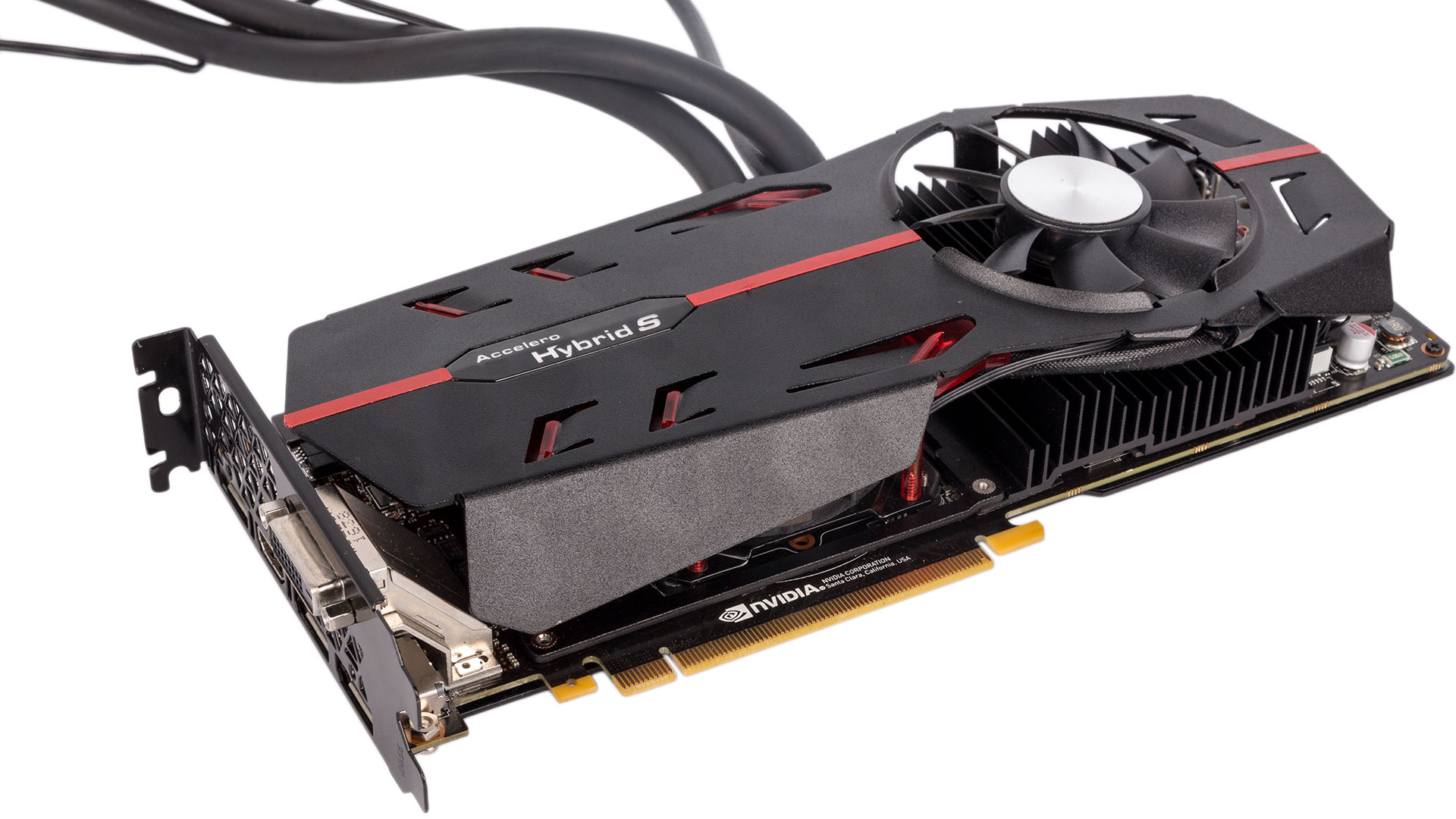
Physically, the card itself isn’t that imposing at 266mm long and basically the same height as the PCI bracket. However, you do of course have to allow for the tubing and find somewhere to mount the 120mm radiator and fan. Oddly, Inno3D has still opted for a cooler and shroud that makes it a ‘2.5-slot’ card, so it’s effectively triple-slot as far as usable PCI slots go. This is a shame, as keeping it dual-slot would have been one way of differentiating it from larger air-cooled models; as it stands, you’re now losing three slots as well as a 120mm fan mount. Build quality is at least good thanks to a metal cooler shroud and the metal backplate, which is anodised in black and ventilated.
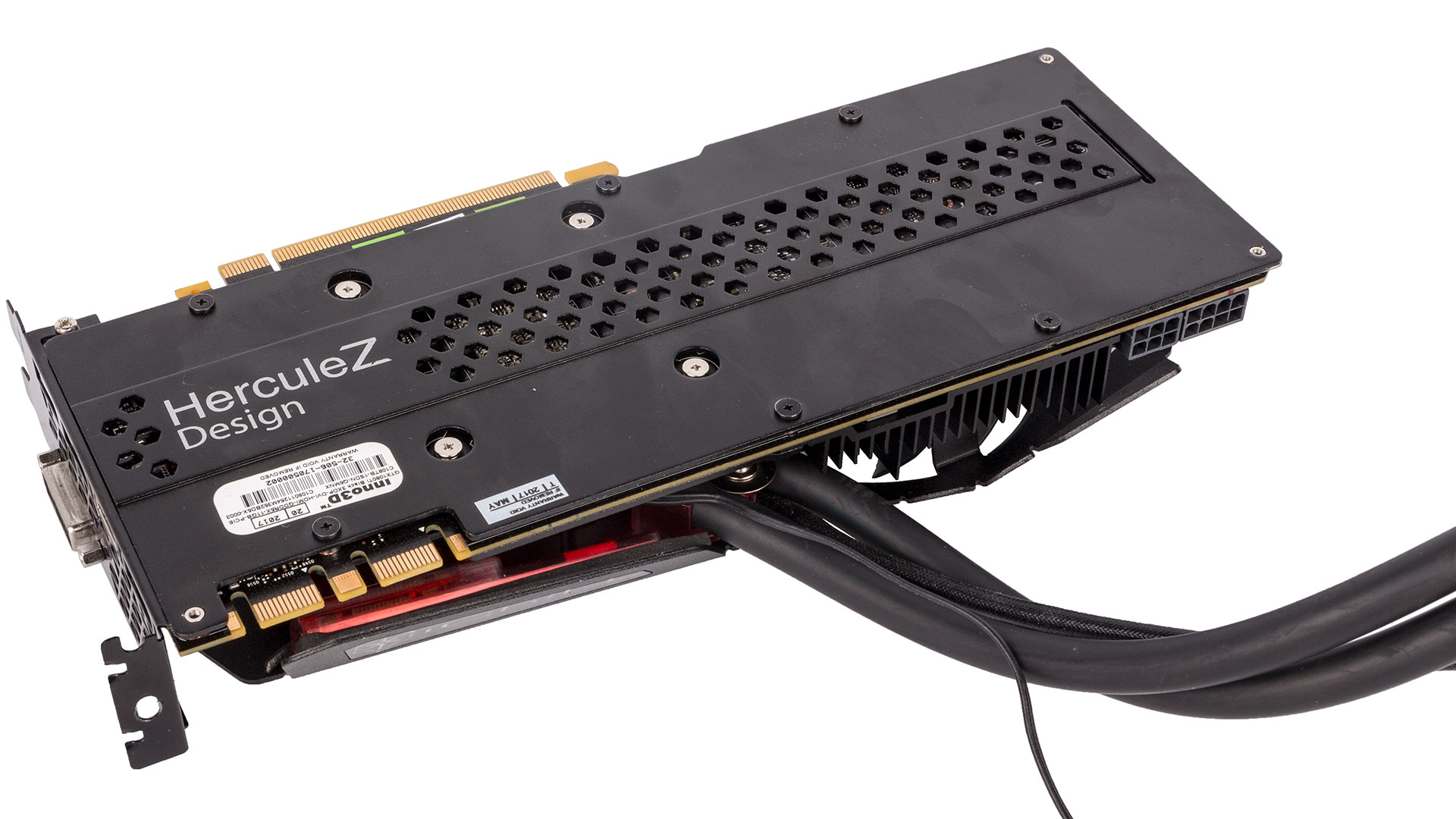
Aesthetically, the GTX 1080 Ti iChill Black is a bit of an odd mix. You’ve got a mainly black card populated by some orangey red highlights and some triple-colour lighting for the logos used to indicate the current power being consumed: blue for low power/idle, green for light gaming, red for high or full load. We then have a white fan with dark fan blades. Strangely for a high-end card, there’s no controllable RGB lighting. Personally, we like the white fan, but we wish the theme had been carried over to the card as well – without proper RGB control, the tricolour lights just feel superfluous.

Inno3D sticks with the trio of DisplayPort 1.4 headers and HDMI 2.0b port dictated by the reference specifications but adds in a dual-link DVI-D header too for legacy monitors.
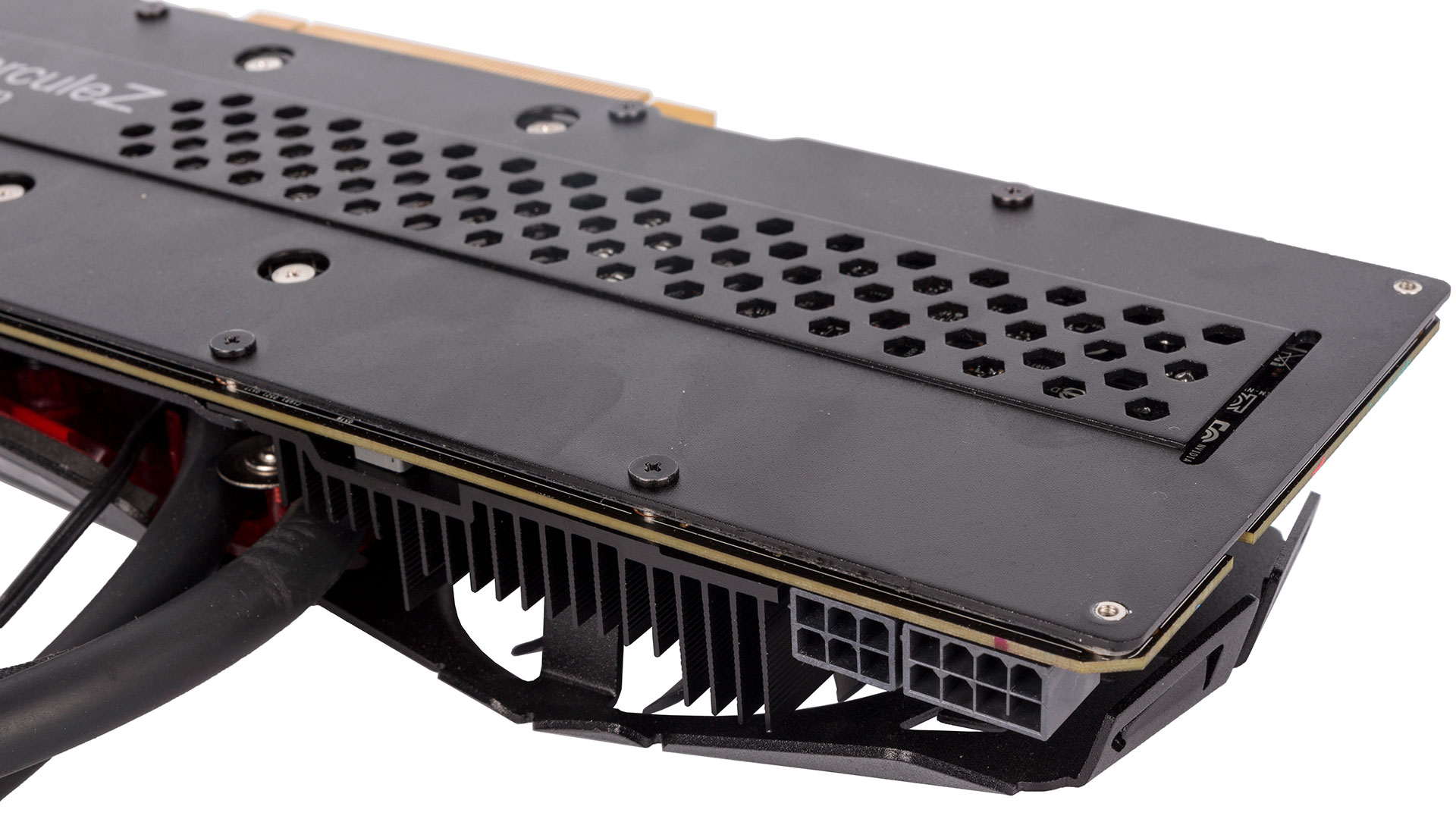
The eight-pin and six-pin PCIe connectors found along the top edge also match reference specifications. Some cards opt for dual eight-pin headers, but we wouldn’t say they’re necessary for anything other than extreme (i.e. sub-zero) overclocking.

The use of liquid-cooling should have advantages in a number of areas – temperature, noise, and speed (thanks to higher boosting). However, it does also force a longer installation process, but it's not hard. It’s a fairly simple design that we’re used to from CPU coolers: A pump/baseplate unit is fixed to the GPU and connected to a single 120mm, slimline radiator via some slim rubber tubing that proved very resistant to kinking. You also get a single 120mm fan, though this isn’t fixed to the radiator by default, so you could in theory fit it elsewhere if the cable length permits. Speaking of cables, you have to connect a separate Molex connector to power the cooler, which is just messy – the MSI Sea Hawk cards, for example, do not need this. You may also note that while the fan cable is neatly sleeved, the Molex cable is not.
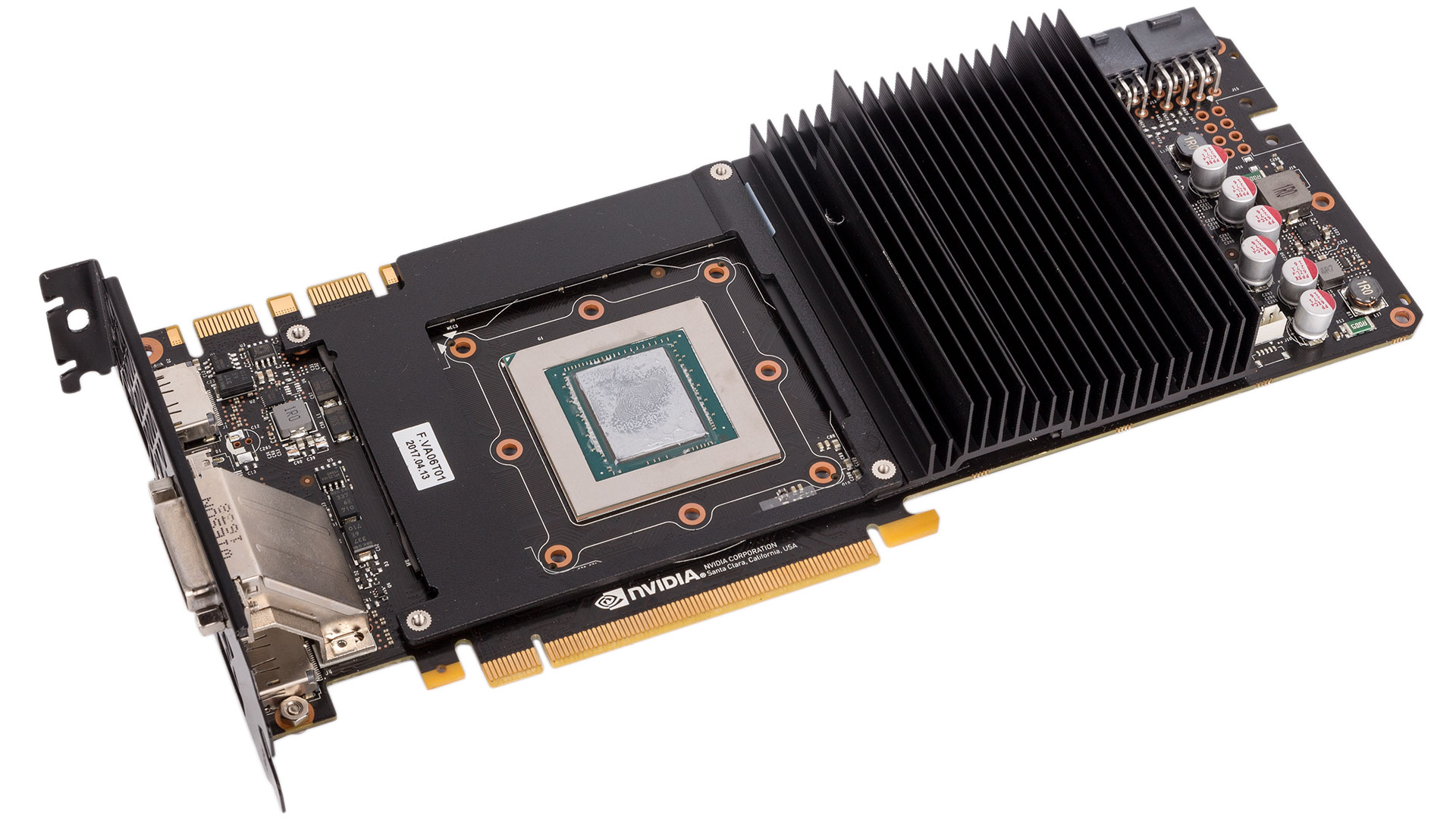
On the card itself, a very large heatsink is dedicated to cooling the power circuitry, and Inno3D also uses a metal contact plate and thermal pads to cool the VRAM chips as well. A single 80mm fan provides active cooling for all this metal. Both this and the 120mm fan connect to the same header on the card, but only the 80mm one is semi-passive and stops completely at lower load levels.
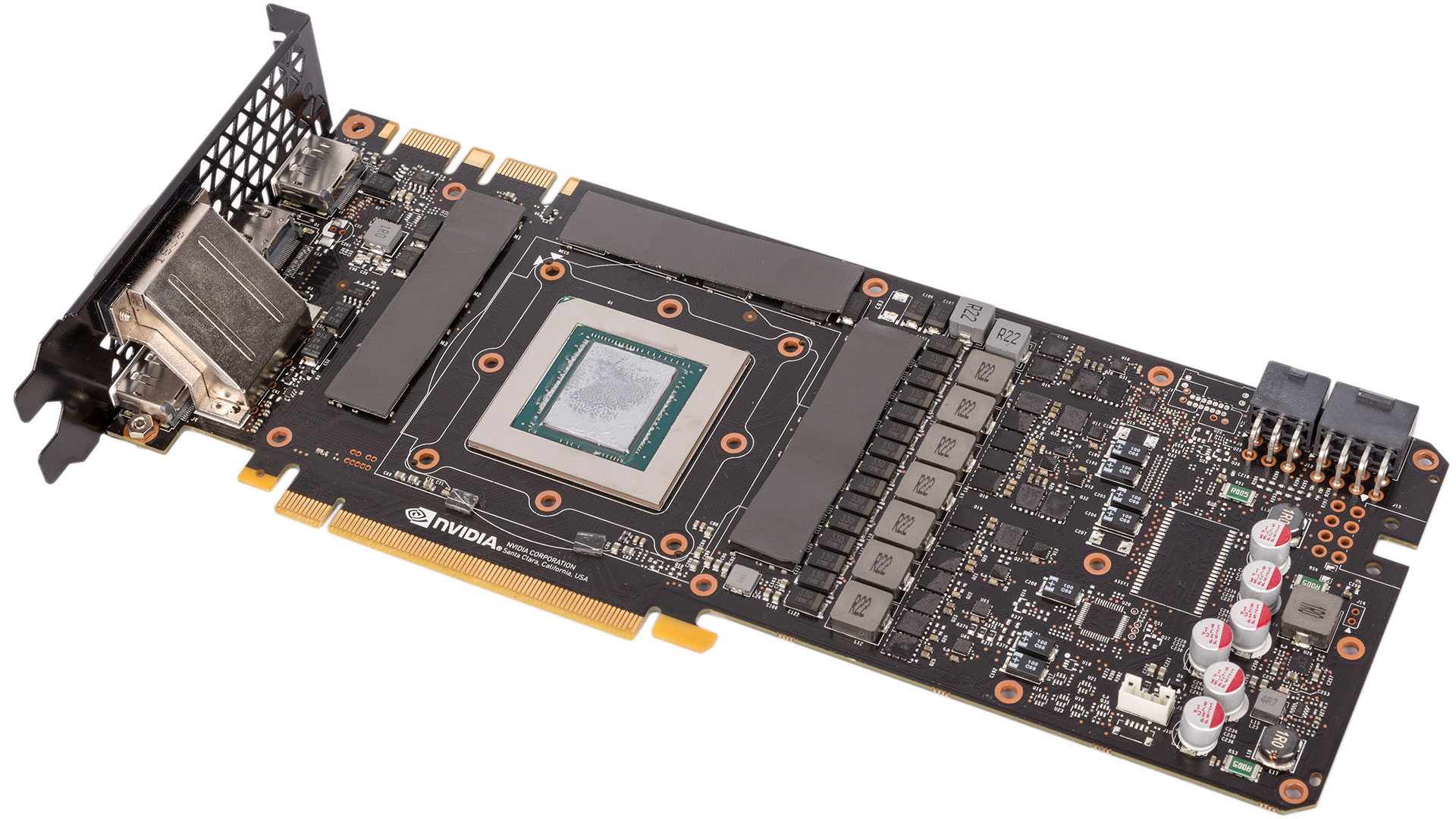
Inno3D's marketing materials claim that it's using 'nothing but the best components' here but fails to elaborate. Looking at the PCB, we see what appears to be a 7+2 phase power configuration, which is plenty.
The card ships with copies of 3DMark and VRMark Advanced editions as well as a small mousepad. You also get a three-year warranty – the standard among high-end cards.
Specifications
- Graphics processor Nvidia GeForce GTX 1080 Ti, 1,607MHz (1,721MHz boost)
- Pipeline 3,584 stream processors, 224 texture units, 88 ROPs
- Memory 11GB GDDR5X, 11.4Gbps effective
- Bandwidth 501.6GB/sec, 352-bit interface
- Compatibility DirectX 12, Vulcan, OpenGL 4.5
- Outputs 3 x DisplayPort 1.4, 1 x dual-link DVI-D, 1 x HDMI 2.0b
- Power connections 1 x eight-pin PCIe, 1 x 6-pin PCIe (top-mounted); 1 x Molex (loose cable)
- Size 266mm long, 95mm tall, 2.5-slot, (plus 120mm radiator and 120mm fan)
- Warranty Three years

MSI MPG Velox 100R Chassis Review
October 14 2021 | 15:04

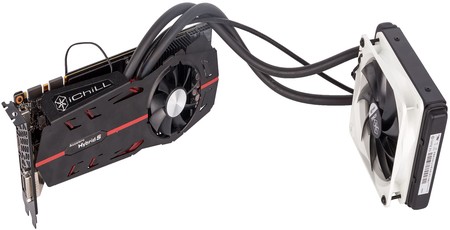
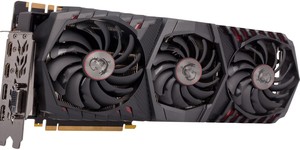
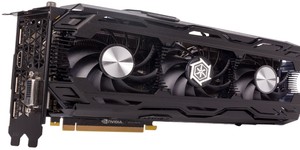
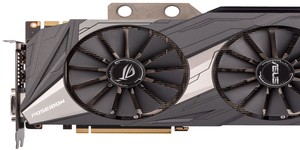




Want to comment? Please log in.